Anne Lister Gentleman Jack wrote a 5 million word diary; 16% is encrypted combining Greek alphabet, zodiac, mathematical and punctuation symbols, covering her daily life, travels and lesbian romances.
Contents
Anne Lister – Born in Halifax
At the time Anne Lister was conceived in 1790, her parents were living in Ireland. Her father Captain Jeremy Lister was serving in the army in Galway. Previously he was stationed at Fort Niagara in America and he saw action at Lexington and Concord, Massachusetts.
Captain Lister’s wife, Rebecca, was sent back to Halifax in England as her pregnancy advanced. Anne Lister was born in Halifax, Yorkshire on 3 April 1791. There is an annual Anne Lister Birthday Week Festival held in Halifax.
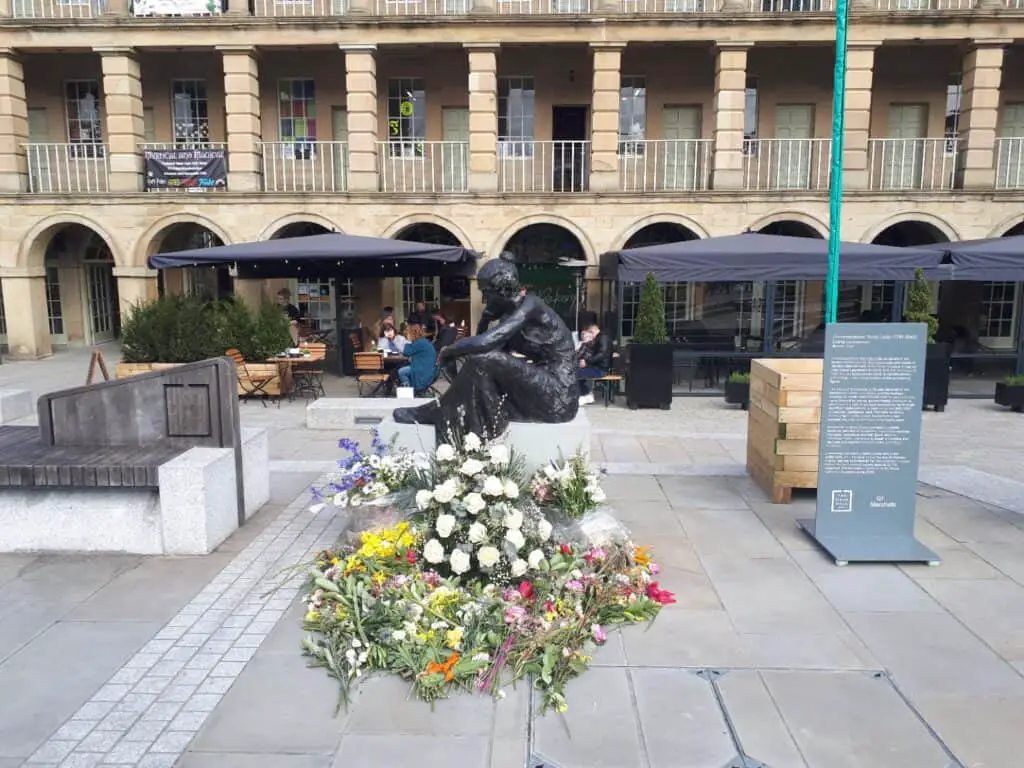
With flowers to celebrate her birthday, 3 April
Anne Lister’s Early Years
Anne Lister’s father, Captain Lister, had inherited a sum of money in 1790, which he invested in a small estate 58 miles from Shibden, near Market Weighton in East Yorkshire. When Anne was 2 years old and following the birth of her brother Samuel in 1793, the family moved to a house named Skelfer that Captain Lister had recently constructed in 1795. Anne Lister’s sister, Marian, was born in 1797. The Listers had four sons and two daughters, but only Anne and her sister, Marian, survived past 20 years of age.
Anne Lister was baptised at Halifax Minster where she later worshipped and is buried.

Anne Lister’s School Days
Anne Lister was initially schooled at the age of seven, at a school run by a Mrs Hagues and a Mrs Chettle in Agnesgate, Ripon. Between 1801 and 1804 Anne Lister was educated at Rev.George Skelding’s vicarage and it was Skelding who initially introduced her to the Classics.
During 1804, Anne Lister was sent to the Manor House School in York where Anne met her first love, Eliza Raine (1791–1860). Anne and Eliza shared a bedroom at the boarding school, but Anne was asked to leave after just two years. However, Anne Lister, rejoined the school after Eliza had left. Eliza expected to live with Anne as an adult, but Anne began affairs with Isabella Norcliffe and Mariana Belcombe who were day-pupils at the school.
Anne Lister and her Lover Mariana
One of Anne Lister’s lovers from school, Mariana Belcombe, married a man conventionally and became Mrs Lawton. Mariana was initially ashamed to be seen in public with Anne Lister because of comments made about Anne Lister’s appearance – she dressed entirely in black and took part in many activities that were not perceived as the norm for women of that era, such as opening and owning a coal mine. Anne Lister was referred to as “Gentleman Jack” by some.
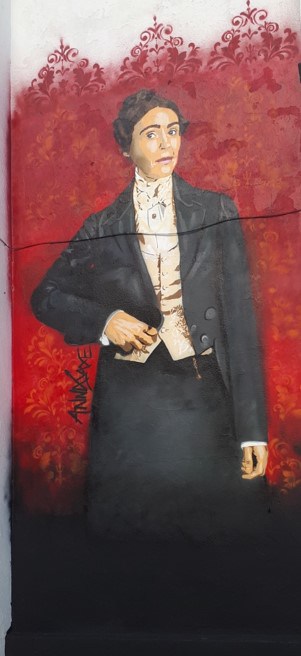
Mariana Lawton and Anne Lister Gentleman Jack were lesbian lovers for many years, including the period during which Mariana Lawton was married – Mariana’s male husband became resigned to this arrangement.
Anne Lister eventually found a little secret comfort in losing Mariana to a man comfort through her horses.
Anne Lister’s father, Jeremy, had given her a horse and from her diary, we see this horse was named Vienne with reference to Vienne, from a little circumstance relative to Vienne in Dauphiny – this was because was Vienne the birthplace of her married lover, Mariana Lawton (maiden name Mariana Belcombe) who was born in Vienne in 1790 during the time her father, Dr Belcombe, spent working on the Continent.
Another horse was again named with reference to her married lover, Mariana Lawton whose full name was Mariana Percy Lawton. However, her choice of Percy as a name carried a double meaning for a third horse to be added to the Lister stable called Hotspur – Hotspur, who was known as Harry Hotspur – he was the son of Henry Percy, 1st Earl of Northumberland.
Most of Anne Lister’s contemporaries were told she had named the third horse Hotspur after Henry Percy (1364-1403) who was known as “Harry Hotspur”, a great northern warrior immortalised in Shakespeare’s play Henry IV but they did not know of the double meaning, that it relates to Percy – her lover with the Christian names of Mariana Percy.
Anne Lister Gentleman Jack and her Lover Ann Walker
The story of a wealthy heiress started when Anne Lister made frequent trips to her aunt Anne and uncle James who lived at Shibden Hall. Anne Lister finally moved in with them at Shibden hall at the age of 24 in 1815. Anne, a highly intelligent polymath, realising she was to become the manager of a relatively large and prestigious estate, began her programme of self-education and enlightenment, projecting an astute business manner in a male-dominated world. Anne Lister met Ann Walker of the Crow Nest estate on various social occasions in the 1820s – Crow Nest is around 1.75 miles from Shibden Hall.
Anne Lister’s lover, Ann Walker, was born on 20 May 1803 into a wealthy family. The Walker family owned a worsted mill and the grand mansion of Crow Nest.
Ann Walker’s parents, John Walker and his wife Mary Edwards lived at Cliffe Hill in the village of Lightcliffe near Halifax. Cliffe Hill Mansion was built on the site of an earlier house dated 1350. Ann Walker was baptised and worshipped at Saint Matthew’s Church, Lightcliffe near Halifax.
Ann Walker’s father, John Walker, inherited Crow Nest from his unmarried elder brother when Ann was six years old and the family moved there whilst John’s unmarried sisters, Ann’s aunts, remained at Cliffe Hill Mansion.
Ann Walker’s brother William Walker died shortly after birth, but Ann had two elder sisters, Mary and Elizabeth, and a younger brother, John Junior – being male, was the heir to the family fortune.
By 1823, when Ann Walker was 19, her sister Mary and both her parents had died and John Junior had inherited the Crow Nest estate. Ann Walker and her remaining sister Elizabeth were left a comfortable allowance.
However, in 1830, further tragedy struck the Walker clan, when newly-married John Junior died on his honeymoon in Naples at the age of only 25. Although his wife was pregnant, their son was stillborn and John had not made a will, meaning no provision was made for his widow. As a result, Ann Walker and her sister Elizabeth, who was married, became very wealthy co-heiresses.
So Ann Walker, who by 1832 had become a wealthy heiress, took on a much more substantial role in Anne Lister’s life. From 1832 the pair became much better acquainted as Anne Lister began to pursue Ann Walker romantically, seeing her as a lesbian companion. The two women grew closer and Anne Lister invited Ann Walker to move in and live with her at Shibden Hall. Anne Lister’s diary mentions that Ann Walker’s mental health issues were challenging at times.
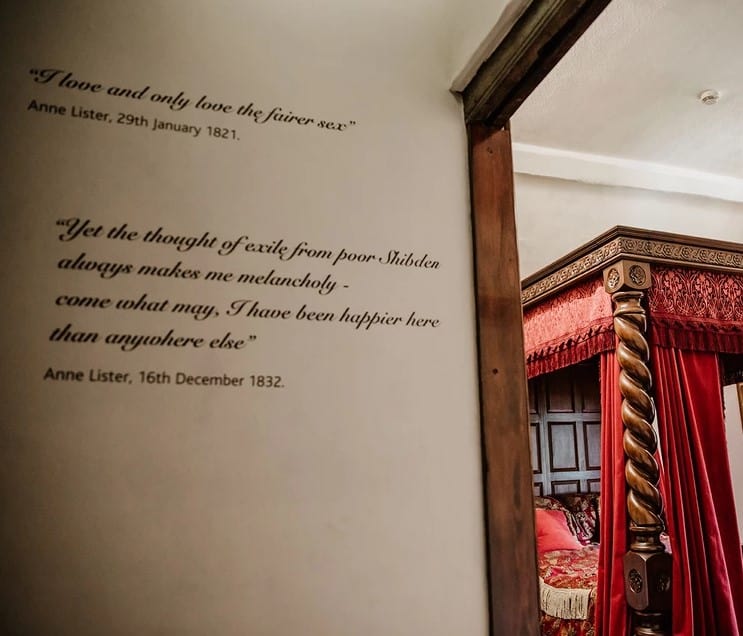
For further information on inside Shibden Hall so our further article on Anne Lister
Anne Lister’s Diaries: Where Can I Read Them?
Anne Lister’s diaries are part of the extensive collection of Lister Family of Shibden Hall records, from the 13th century to 1933. Anne Lister wrote a detailed diary of her daily life in 26 volumes of 7,772 pages. In addition to her diaries, Anne Lister also left behind 14 volumes of travel notes covering her British and overseas trips including the newly opened railway from Manchester to Liverpool in 1831, and her many adventures throughout Europe.
During Anne Lister’s formative years, much of Europe was at war and therefore leisure travel there was not an option. However, Anne Lister had a keen interest in foreign countries and cultures, but her knowledge was originally gleaned only from books. The ending of the Napoleonic Wars in 1815, heralded a new era of travel opportunities for the wealthy British people such as Anne Lister.
The transcripts of Anne Lister’s annual birthday diary entries from 3 April 1818 to 3 April 1840 can be read here.
How did Anne Lister and Ann Walker Dress?
Anne Lister dressed in black and in a masculine style. By contrast, Ann Walker dressed in attire typical of an upper-class lady of their time. To discover more see our informative article Best Gentleman Jack Fashion Exhibition and Guide.
Anne Lister Gentleman Jack and Ann Walker’s Same-Sex Marriage
Did Anne Lister love Ann Walker? Yes, as the two ladies considered themselves married in Easter 1834, after taking Holy Communion together in Holy Trinity Church, York. Although same-sex unions were illegal at the time and the ceremony was not official, the women took their ‘marriage’ seriously. Ann Walker wore an impressive onyx ring and Anne Lister wore a gold band.
The first modern lesbian couple, Anne Lister and Ann Walker spent three months on their honeymoon, travelling through France and Switzerland. Ann Walker moved into Shibden Hall with Anne Lister upon their return.
During the course of their marriage, they travelled extensively, both in the British Isles and abroad, exploring France, Switzerland, Spain and Belgium, before their last trip through Europe to Russia.
Anne Lister liked to climb mountains and Ann Walker would often go with her as far as the foothills sometimes, on horseback. Ann Walker loved to sketch, and they both kept diaries.
In addition to travelling, the couple used their combined considerable wealth to renovate and improve Shibden Hall and its grounds. They also changed their wills to leave a life tenancy to one another upon their deaths, at which point the properties would revert to the heirs recorded in their wills.
Anne Lister’s Coal Mines and her Rival Christopher Rawson
The powerful Rawson family was Anne Lister’s keenest coal mining rival. The
Rawsons’ power base lay in the Southowram township, as did
Anne Lister’s Shibden estate.
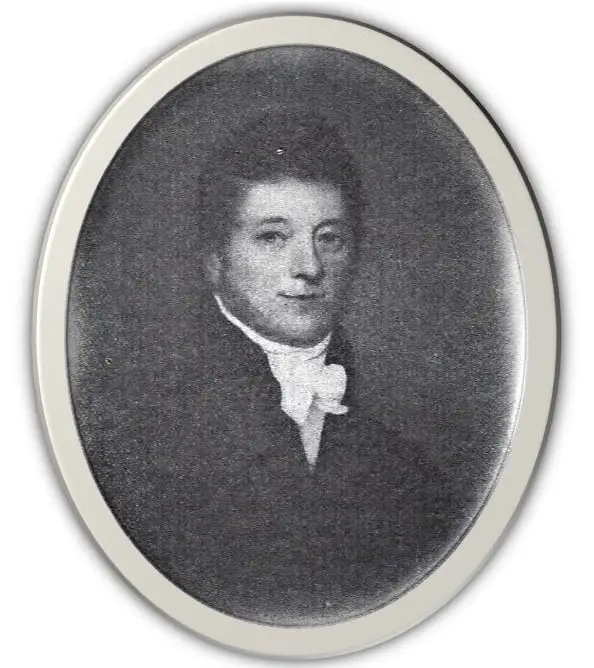
The Rawson’s eldest son Christopher and Anne Lister were originally friends, sharing the same political ideals and it was he, as the founding president who admitted her into the Halifax Literary and Philosophical Society.
However, it was eventually Christopher Rawson who really irritated Anne, partly because he occupied the public offices that might rightly be due to the heir of Shibden Hall.
Christopher Rawson also had designs on Anne’s sister Marian, that would upset her inheritance planning.
Christopher Rawson lived at Hope Hall in Halifax town centre. Hope Hall, on Clare Road, is across the way from the current Lloyds Halifax headquarters building. Hope Hall is now the Albany Club.
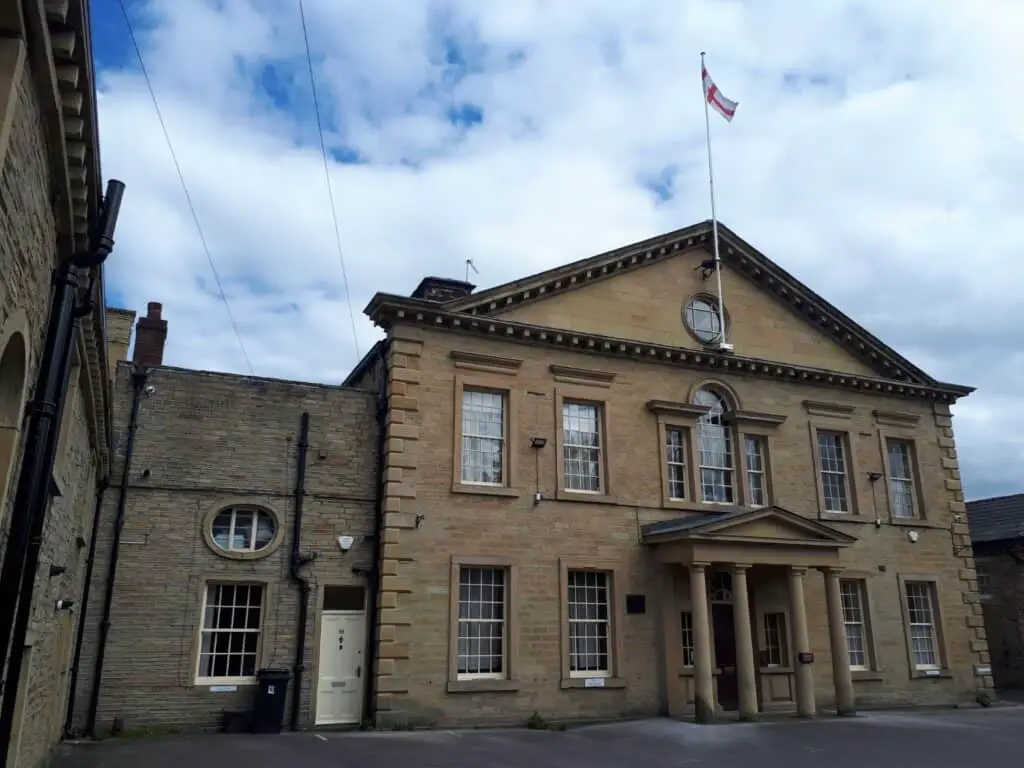
Christopher Rawson’s home – Hope Hall in Halifax
Christopher was chairman of the local Rawson family bank which was based at Somerset House, also in central Halifax. Today, Somerset House is the Alibi restaurant on Rawson Street.

Also, Christopher Rawson was Deputy Lieutenant and a Magistrate for the county of Yorkshire, a local Tory grandee, a freemason and Lord of the Manor of Southowram
Christopher Rawson wanted to buy ten crucial acres of Anne’s coal above Shibden Hall, near Cunnery on the eastern slopes of Beacon Hill. Christopher’s younger brother Jeremiah entered negotiations. Anne initially agreed to a generous ten to fifteen-year lease.
However, Anne Lister already suspected them of trespassing onto Shibden coal seams
and threatening her pits with flooding so relationships grew tense.
A coal lease was drafted from Anne Lister to Christopher Rawson, running to over 12 pages, but was never completed. Christopher Rawson informed Anne Lister’s Halifax lawyer Robert Parker that “I would not sign such an agreement for all the coals she possesses” and refused to sign what he considered to be a restrictive lease.
Did Anne Lister know Emily Brontë?
During the winter of 1838–39, Emily Brontë, author of Wuthering Heights lived at Law Hill House in Southowram, less than a mile away from Anne Lister’s Shibden Hall. Law Hill was Anne Lister’s property.
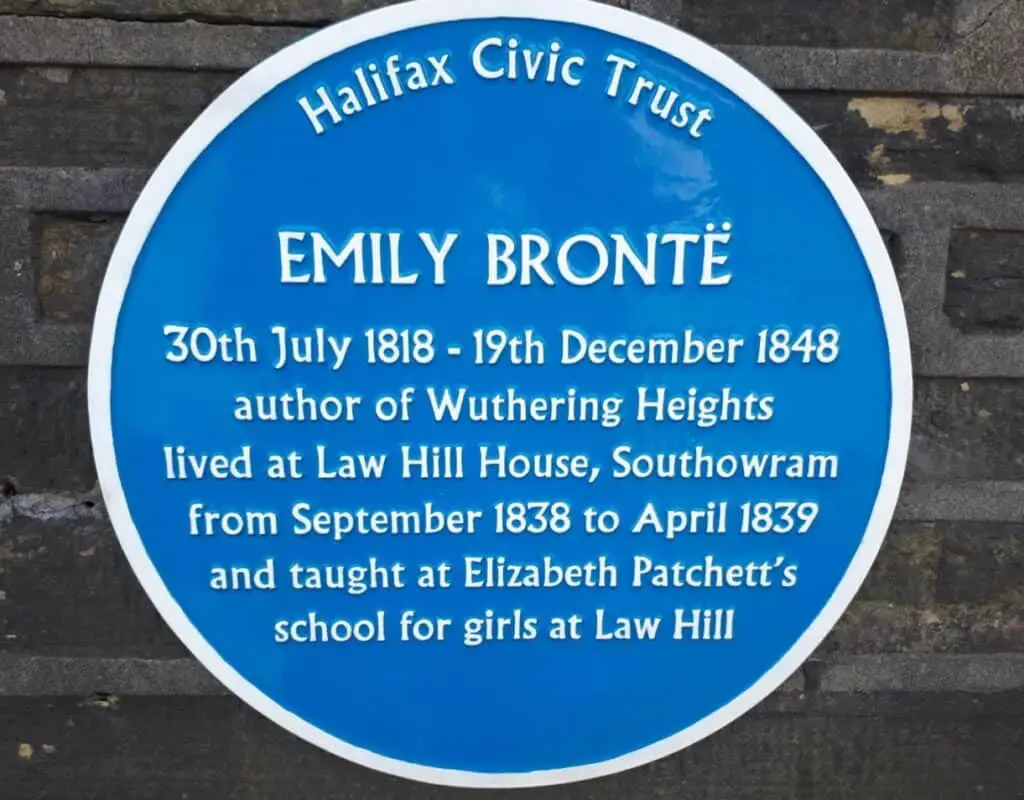
In September 1838, Emily Brontë surprised her family by taking the post of a teacher at Law Hill School in Southowram. Emily Brontë served under the headteacher Miss Elizabeth Patchett, who believed in giving her pupils (it was a unisex girl’s school) a comprehensive education, taking them to museums and concerts, in addition to giving them traditional lessons.

We know that whilst Emily Brontë served at Law Hill School as a teacher, the pupils were also taken to the ‘Grand home of a woman who had been known to Miss Patchett since childhood.’ The home was Shibden Hall and the woman was Anne Lister.
Would Emily Brontë have been expected to accompany her pupils on the mile walk to visit Miss Lister at Shibden Hall? It seems likely, especially as Charlotte Brontë had written how Emily Brontë was never allowed any time on her own during her service at Law Hill School.
Charlotte Brontë wrote of Emily Brontë “I have had one letter from her since her departure, it gives an appalling account of her duties – hard labour from six in the morning until near eleven at night, with only one half-hour of exercise between – this is slavery, I fear she will never stand it.”
One of the most remarkable scenes in Charlotte’s novel Jane Eyre comes when the young protagonist Jane is locked in the ‘Red Room’ of Gateshead Hall by her cruel aunt, Mrs. Reed.
We are aware that Anne Lister’s wife, Ann Walker, barricaded herself into the room at one point, and also that Shibden Hall’s Red Room was reputed to be haunted by Anne Lister’s uncle, just as the Red Room of Gateshead Hall is haunted by Jane Eyre’s uncle.
So it may be probable that Emily Brontë had herself been inside the Red Room during a visit as a teacher, noted its ghostly reputation, and then later told the story to her sister Charlotte Brontë, for later use in Jane Eyre.
Anne Lister Gentleman Jack – Death and Legacy
in 1840 when the couple were travelling in Russia in the Caucasus Mountains area, Anne Lister became ill, it is thought from a fever brought on by an insect bite. Anne Lister died on 22 September 1840. There are contemporary reports of whole battalions of Russian soldiers dying in similar circumstances in that area due to such insect bites.
Anne Lister’s last diary entry was 11 August 1840, so she must have been seriously ill and debilitated for around 6 weeks before her eventual untimely demise.
Due to the dedicated research and deciphering of Anne Lister’s sexually explicit diaries, by historian Helena Whitbread, we now know of Anne Lister’s many relationships and sexual exploits with other women in the era of Jane Austen and the Brontë sisters. As a landowner, industrialist, and lesbian female in early nineteenth-century Yorkshire, Anne Lister defied every convention of the society she lived in.
Anne Lister’s diaries detail how she dealt with, and embraced, her sexuality in an era when even language had not evolved to express same-sex love. Anne Lister has therefore been called ” The First Modern Lesbian”.
Anne Lister’s statue is in the beautiful Italianesque piazza at the Piece Hall, Halifax:
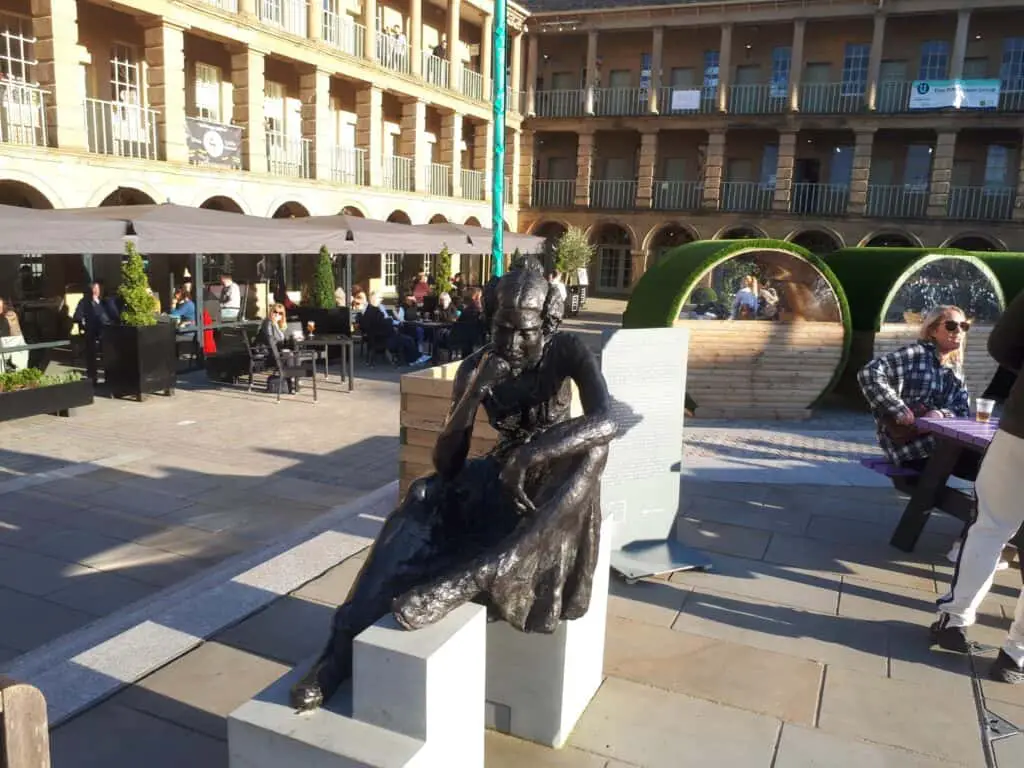
For our information on the Piece Hall and other things to do in Halifax, click here.
It took eight months, by ship and coach, for Ann Walker to return Anne Lister’s embalmed body back to Yorkshire, arriving in Halifax on 24 April 1840.
Anne Lister’s Funeral
The following is a transcript from the Leeds Times, dated 1 May 1840…
HALIFAX. “The remains of Miss Lister, heiress of the estate of the late Captain Lister, who died in Circassia, on the 22nd day of September 1840, have been brought from thence to be interred in the family vault at the Parish Church, Halifax [Halifax Minster]. The interment took place on Thursday last. The vault in the interior of the church was beautifully finished. The coffin was of the most splendid description, bearing the coat of the arms of the family. The funeral procession was formed of the hearse, two mourning coaches, with two carriages, and a few of the deceased lady’s tenants on horseback. The road from Shibden Hall to the Parish Church [Halifax Minster] was crowded, and in some places was almost impassable. On reaching the church thousands of people were assembled to witness the sight, and it was with the greatest difficulty the corpse could be got out of the hearse. The deceased was aged forty-nine years.”
Marian Lister’s Burial Place
The last Lister of Anne Lister’s generation was Marian Lister, Anne’s younger sister who lived to see her 83rd birthday. However, Marian was not buried with her close family members in Halifax Minster. Instead, she is buried with her cousins Dr. Lister and John Lister, MA, in the churchyard of the church of Saint Anne-in-the Grove in the nearby hilltop village of Southowram.
Anne Lister’s Family Tree
The genealogy of the Lister family of Shibden Hall from 1274 to 1933 is shown on this Calderdale Central Reference Library Lister Family Tree – from the transactions of the Halifax Antiquarian Society, 1956.
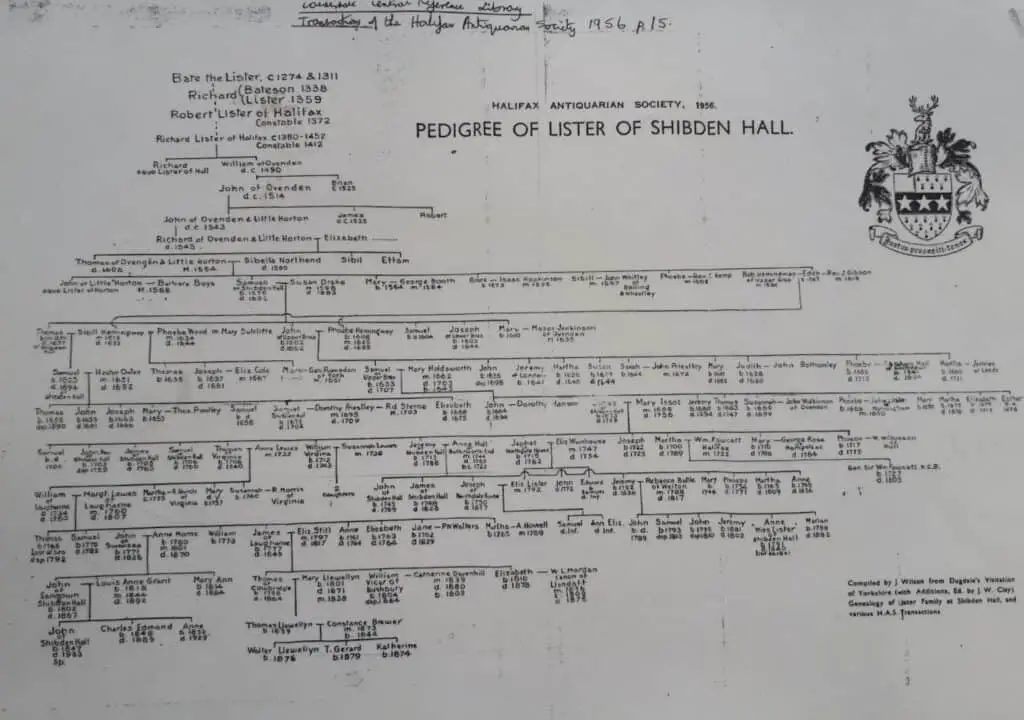
Ann Walker’s Legacy – the Wife of Anne Lister Gentleman Jack
Ann Waker returned to Shibden Hall having inherited a lifetime’s interest in the property from Anne Lister’s will, provided that she did not marry and continued to live there.
However, shortly after her return from Russia, Ann Walker changed her will, leaving her estate to George Sackville Sutherland, the oldest son of Captain George Sutherland, the husband of Ann Walker’s sister Elizabeth.
However, Ann’s physical health and her mental state declined as she worked to maintain the two estates of Shibden and Crow Nest, with matters coming to a climax on September 9, 1843.
Ann Walker’s sister Elizabeth and her husband Captain Sutherland travelled to Halifax to visit her. However, Ann Walker had left Shibden Hall of her own accord (some say under duress) travelling to York under the direction of Doctor Belcombe.
Ann Walker travelled to a private asylum in York and was found to be of unsound mind on 28 November 1843. Ann was in the asylum for about eight months, after which she spent time with the Sutherlands in London. Ann Walker’s sister Elizabeth died of tuberculosis in December 1844.
Ann returned to Shibden Hall on 18 April 1845 and lived there with Captain Sutherland and his children. Captain Sutherland became responsible for the management of the Walker estate and was co-trustee of Shibden Hall with William Gray. All finances and expenses for Ann Walker’s estate went through the Chancery Court in London because of her ‘lunacy’.
However, things did not go well for Captain Sutherland at Shibden Hall – his oldest daughter Mary died in 1845 shortly after moving into Shibden Hall and Captain Sutherland died there two years later on 22 April 1847.
Ann Walker continued to live at Shibden Hall until she moved into Cliffe Hill after the death of her aunt Ann, staying there until her own death on 25 February 1854, aged 51.
By the time of Ann’s death, George Sackville Sutherland, Captain Sutherland and Elizabeth’s eldest son and Ann Walker’s named heir, had also died and so Shibden Hall passed on to the couples’ only surviving son Evan Charles Sutherland.
Ann Walker was buried in the old 1775 St Matthew’s Church, Lightcliffe near Halifax. According to her memorial plaque “under the pulpit”. The exact location of this pulpit is the subject of debate, as the church has since been partially demolished, and replaced by a newer 19th-century church a few hundred yards away. A memorial stone has been placed on the spot where it is thought that Ann Walker lies and a brass memorial plaque to her now hangs inside the old church tower.
Ann Walker’s Diary Discovery of 2020
A travel journal belonging to Ann Walker was discovered In October 2020 at the West Yorkshire Archives. The blue marbled notebook, around 105mm x 150mm in size, has about 78 completed pages and covers the period from 4 June 1884 to 19 February 1835.
The notebook was cataloged as “Journal of Anne Lister, including travels in France and Switzerland with Ann Walker” but a researcher from the In Search of Ann Walker project realised that the handwriting did not match that of Anne Lister, but instead matched the signature of Ann Walker.
Closer examination found an entry dated 9th January 1835 that talked of “Five years today since I lost my poor brother” which relates to what is known about the death of John Walker, Ann Walker’s brother.
In October 2020 it was verified that these journals are indeed those of Ann Walker, and has now been correctly reclassified.
Who Built Shibden Hall?
Shibden Hall, Anne Lister’s house, was built in 1420 by cloth merchant William Otes.
Anne Lister’s Books at Shibden Hall
One of Anne Lister’s books from 1829 found its way back to Shibden Hall in May 2023 thanks to the very kind gift from Anne Choma the noted historian and series consultant to HBO/BBC’s Gentleman Jack series
Anne Lister lived in France and the Pyrenees from 1829 to 1830. On her travels, Anne Lister purchased a small pocket guide in Paris in July 1829 and this is now displayed at Shibden Hall, along with her other remaining books.
Anne Lister’s diary states: “Bought 3rd edition manual or Itineraire du Curieux dans le Cemetiere du Pere La Chaise” – Itinerary of the Curious in the Cemetery of Pere La Chaise.
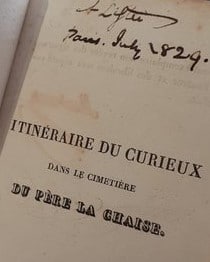
Who Owns Shibden Hall Now?
Calderdale Council has owned Shibden Hall since 1933 when John Lister died, and it opened as a museum in 1934. The Lister family lived at Shibden Hall for more than 300 years. John Lister (1847 – 1933) was the son of Dr. John Lister (1802-1867) who inherited Shibden after Ann Walker’s death in 1854.
John Lister published many articles about Anne Lister’s diaries – he and a friend cracked Anne Lister’s secret code and discovered Anne’s sexuality. John Lister then never published anymore from her diaries but kept them hidden at Shibden Hall.
John Lister was an entrepreneur and philanthropist but unfortunately, he never seemed to have enough money for all his ventures.
In 1923 a friend of John Lister’s, Arthur McCrae from a wealthy Halifax textile family, purchased the Shibden Estate and gave it to the public of Halifax, on the condition that John Lister could use the house and gardens for the rest of his life. Shibden Park opened to the public in 1926.
John Lister died on 12 October 1933. Shibden Hall, under the terms of the sale then came under the ownership of the Halifax Council. Shibden Hall opened as a museum in 1934 and the papers, books, and diaries were moved to Calderdale Archives.
Timeline of Shibden Hall’s Owners and Residents Since it was Built in 1420
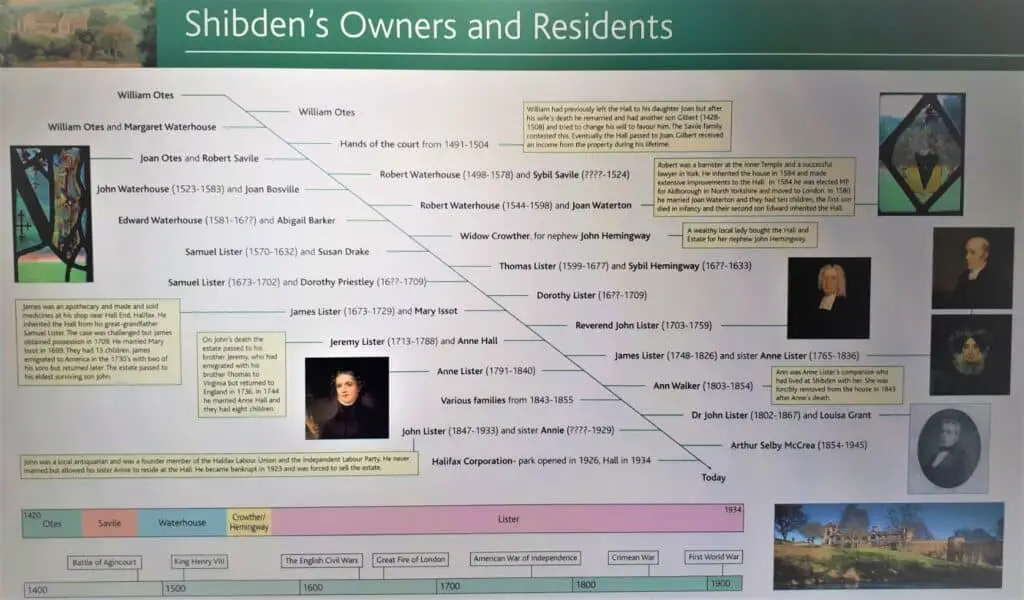
Ann Walker’s Crow Nest Mansion
The grand house, designed by John Carr, was built by the Walker family in 1775, but the mansion does not exist now, it is the site of Crow Nest Golf Club.
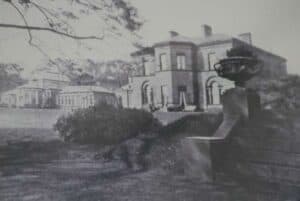
The industrialist Sir Titus Salt, the creator of the lustrous and subsequently fashionable cloth called alpaca rented the house between 1844 and 1858 but was asked to leave after the death of Ann Walker because her brother, Mr Sutherland-Walker wanted to take up residence at Crow Nest.
Crow Nest was placed on the market by Mr Sutherland-Walker in 1867 when Sir Titus Salt bought the property for £26,500 and returned to live there. One of his visitors was the missionary and explorer, Dr Livingstone and Sir Titus Salt lived at Crow Nest until his death in 1876.
Anne Lister’s Shibden Hall
Shibden Hall and Shibden Park was the home of Anne Lister and Ann Walker, the historical figures of BBC/HBO Gentleman Jack fame. The Shibden Estate is one of West Yorkshire’s most important heritage sites and is definitely well worth visiting along with seeing Anne Walker’s statue at the magnificent Piece Hall in Halifax town centre.
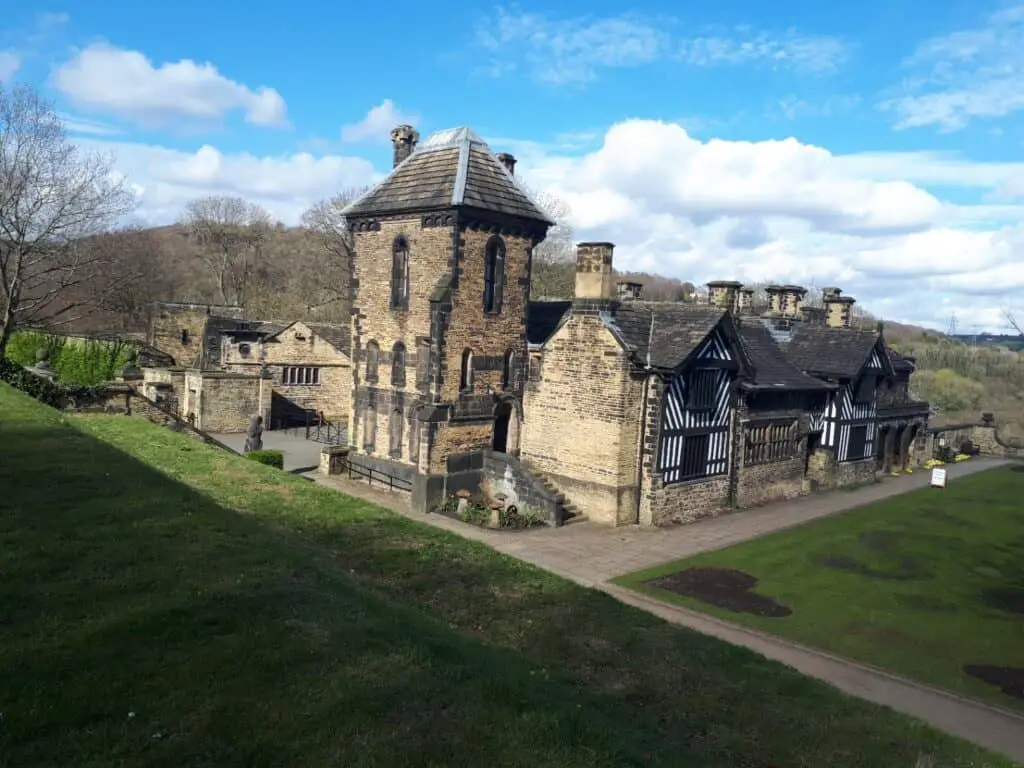
The current day Shibden Hall with its original furniture and bedding contents would still be very recognisable to both Anne Lister and Ann Walker.


Anne Lister’s Home
For over 300 years (1615–1926) the Shibden estate was owned by the Lister family, the most famous resident being ‘Gentleman Jack’ Anne Lister (1791–1840), In 1826, Anne’s Uncle, James Lister, died and Anne Lister took over the management of Shibden Hall. Ten years later when both her father and her aunt Anne died, Anne Lister, aged 34, became the sole owner of Shibden Hall.
For a room-by-room description of Shibden Hall its contents and what to expect there, please also refer to our post The Anne Lister House – Best Inside Shibden Hall Guide. There is the Anne Lister Monument, a place of pilgrimage for many, in the grounds of Shibden Hall. For our information, photographs and location please see click here.
Gentleman Jack TV Series: Main Characters and Actors
Gentleman Jack TV Series – what is it about?
Gentleman Jack is BBC/HBO’s globally successful 1830s period dramatisation of the life of an English Yorkshirewoman called Anne Lister – an active lesbian, landowner, industrialist, voracious learner and cryptic diarist who splendidly defied every convention of the society she lived in.
How old is Anne Lister in Gentleman Jack?
Gentleman Jack is set from 1832 when Anne Lister was 41 and Anne Walker was 29 years old when the pair, who already knew each other, became much better acquainted.
Ann Walker and Anne Lister’s story has been brought to life in the BBC/HBO television drama Gentleman Jack, with Anne Lister played by Suranne Jones and Ann Walker played by Sophie Rundle.
Lesbian landowner: Anne Lister Gentleman Jack played by Suranne Jones

Heiress and Anne Lister’s lesbian lover and wife: Ann Walker played by Sophie Rundle

Ann Lister’s Aunt Anne and her mother figure: Aunt Anne played by Gemma Jones
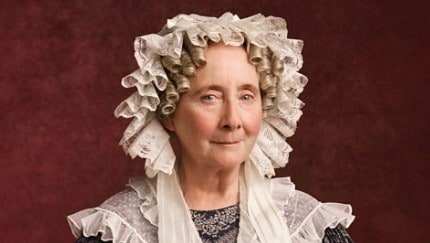
Anne Lister’s father: Captain Jeremy Lister played by Timothy West
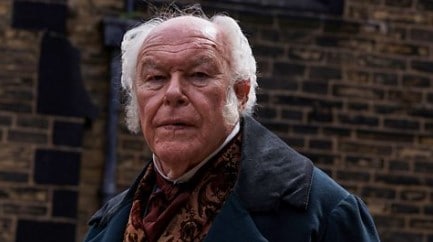
Anne Lister’s sister: Marian Lister played by Gemma Whelan

Anne Lister’s long term lesbian lover since their school days: Mariana Lawton (Née Belcombe): Played by Lydia Leonard

Where is Shibden Hall? Interactive Location Map including Anne Lister’s Shibden Hall, Mural, Anne Lister’s Statue and Burial Place
Where to Stay or eat and drink in Shibden with Anne Lister Connections
Whether you are just looking for a quick drink or coffee, a leisurely lunch or quality dinner, or want to stay over in a boutique room or the Anne Lister suite, take a look at our article on the Shibden Mill Inn here. The Shibden Mill Inn has been in the ownership of both the Lister family and the Walker family and is less than a 2-mile journey by car or taxi.
For our informative YouTube video on the Piece Hall, click here
